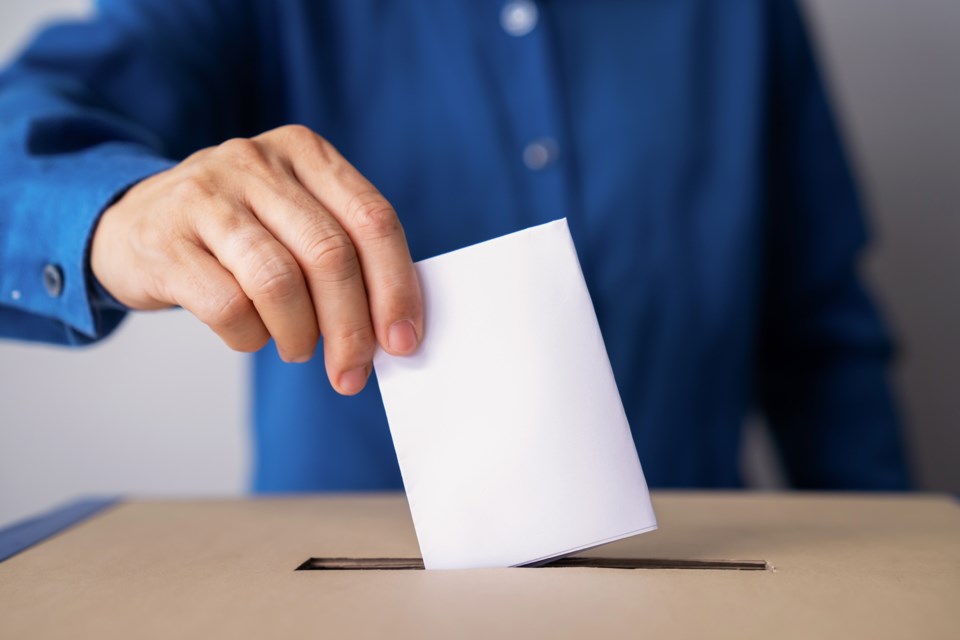The BC Electoral Boundaries Commission wants to add six seats to the B.C. legislature to balance population growth with representation — and one of the new seats would be a new riding called New Westminster–Coquitlam.
The final boundary changes have been submitted Monday, April 3 in a final report.
“Our proposal to increase the number of electoral districts reflects our growing province,” said Justice Nitya Iyer, chair of the commission.
“We do not recommend reducing the number of ridings in more sparsely populated areas of the province because doing so would undermine effective representation.”
The commission recommends adjustments to the boundaries of 72 electoral districts and changes to 41 electoral district names based on geography, demographics, communication and transportation considerations.
Under the new boundary changes there would be five Tri-City ridings, with one merged with New Westminster, to be called New Westminster–Coquitlam.
In addition, there would be a riding called Port Moody–Burquitlam, and, at 84 sq. km, would cover one of the largest swaths of the Tri-Cities, bringing together the villages of Anmore and Belcarra, Port Moody and urban neighbourhood of Burquitlam.
Only Coquitlam–Burke Mountain, at 617 sq. km. would cover a larger area.
Still, an earlier proposal by the boundary commission discussed last fall would have seen many more changes, which the commission ended up rejecting after public consultation.
"We considered putting Westwood Plateau into a Port Moody electoral district and combining Burquitlam with Coquitlam," the commision states in its final report.
"However, we heard that Port Moody is closely tied to Burquitlam and therefore propose including Burquitlam in a riding to be called Port Moody–Burquitlam. We recognize that Westwood Plateau fits well in the Coquitlam–Burke Mountain riding and have left it this way."
The biggest change would be the new riding of New Westminster–Coquitlam, combining parts of New Westminster, including the city's downtown, south and east of Sixth and Tenth Avenues, Queen’s Park, Sapperton and Brunette Creek, as well as the southwestern part of the Coquitlam neighbourhood of Cariboo.
Its boundaries run along Austin Avenue and Blue Mountain Street in the north and east, and they follow the Fraser River to the south and west.
New riding for Port Moody
The new riding of Port Moody–Burquitlam, meanwhile, would include the City of Port Moody, the villages of Belcarra and Anmore, and the Coquitlam neighbourhood of Burquitlam.
It includes part of Eagle Ridge between Guildford Way and David Avenue. Its southern boundary runs along Austin Avenue, and its northwestern and eastern boundaries follow the municipal borders of Coquitlam, Port Moody, Belcarra and Anmore.
But the population of the five ridings would be roughly similar, ranging from 57,000 to 61,000.
It will be up to the B.C. legislature to approve the boundary changes.
If approved the new electoral map would include these five Tri-City ridings:
- Coquitlam–Burke Mountain
- Coquitlam–Maillardville
- New Westminster–Coquitlam
- Port Coquitlam
- Port Moody–Burquitlam
Currently, the region has four districts:
- Coquitlam–Burke Mountain, held by NDP MLA Fin Donnelly
- Coquitlam–Maillardville, held by NDP MLA Selina Robinson
- Port Coquitlam, held by NDP MLA Mike Farnworth
- Port Moody–Coquitlam, held by NDP MLA Rick Glumac
Here is how the boundaries of the other three Tri-City electoral districts is described:
Port Coquitlam
There are no big changes proposed for the Port Coquitlam riding, which is expected to grow at a "moderate rate."
"This riding follows the municipal boundaries of the City of Port Coquitlam. The only change we propose is to move the Kwikwetlem First Nation reserve (Coquitlam 2) into neighbouring Coquitlam–Maillardville so that both kʷikʷəƛəm̓ (Kwikwetlem) reserves are in the same electoral district," the report further states.
Coquitlam-Burke Mountain
This riding includes downtown Coquitlam, River Springs, Sun Valley and the core of the Westwood Plateau. It follows David Avenue, Johnson Street, the CP Railway and the City of Coquitlam municipal boundary in the south. In the north and east, it follows the Metro Vancouver Regional District. In the west, it follows the City of Coquitlam municipal boundary, Indian Arm and Indian River.
Coquitlam-Maillardville
Coquitlam–Maillardville includes Maillardville, Austin Heights, Fraser Mills, Ranch Park and Mayfair. Its boundaries follow Blue Mountain Street in the west, the Fraser River in the south, and Guilford Way in the north. Its eastern boundary follows the Coquitlam municipal boundary except where it jogs into Port Coquitlam to keep both kʷikʷəƛəm̓ (Kwikwetlem) First Nation reserves in the same riding.





